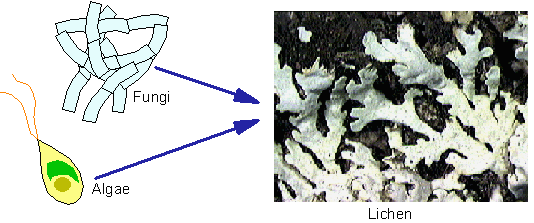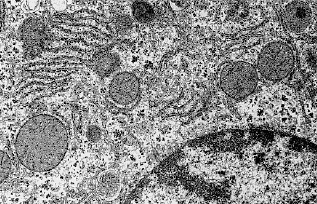Although "multiplication + control" is the most common mechanism of metasystem transition, there is another mechanism, symbiosis. Symbiosis, which means "to live together", is a cooperation of several non-similar organisms. For example, a lichen is a symbiotic organism formed from algae and fungi.

I call symbiosis a heterogeneous metasystem transition because cooperation is established between different species of organisms. It is opposed to the homogeneous metasystem transition described by Turchin:

Relations in heterogeneous cooperation are asymmetric from the very beginning. Also, there is no differentiation because components are already different. However, components may change considerably in the process of their coevolution.
Other examples of symbiosis
1. the eucaryotic cell originated from a  symbiosis of several bacterial species. Mitochondria are bacteria that became specialized as energy producers.
symbiosis of several bacterial species. Mitochondria are bacteria that became specialized as energy producers.

This is a transmission electron micrograph of rat liver cells. Part of the nucleus is in the right lower corner. Circular objects are mitochondria.
2. Symbiosis of  leaf-cutter ants and fungi.
leaf-cutter ants and fungi.
3.  More examples
More examples

